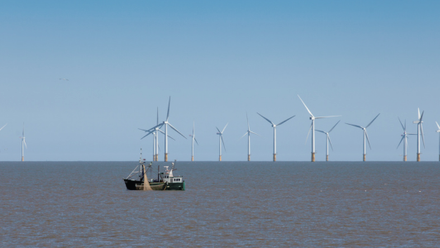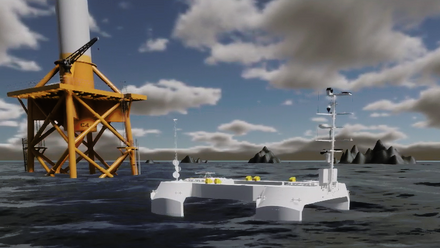UK offshore wind consent: racing against time
The UK’s net-zero ambitions rely heavily on offshore wind, but the country’s sometime sluggish planning consent system threatens to stall progress.
In December 2024, the UK Government released its Clean Power 2030 Action Plan – a roadmap for generating up to 95% of Great Britain’s energy from clean sources. “Offshore wind has a particularly important role as the backbone of the clean power system,” the UK government wrote in the report.
The government has set a target of 43 - 50 gigawatts (GW) of operational offshore wind capacity by 2030. As of 2024, the operational capacity stood at 15 GW.
According to the Climate Change Committee’s recently published ‘Progress in reducing emissions – 2025’, meeting the lower range of the target (43 GW) will require adding around 4.5 GW of new capacity each year. As the Committee notes, this represents, “triple the average annual installation rate seen since the start of this decade.”
That said, in recent days the Scottish government has granted consent for the Berwick Bank project, set to become the UK’s largest offshore wind farm, expected to have a capacity of 4.1 GW.
Why consent takes so long
The current consent process for offshore wind projects involves multiple regulatory bodies and extensive environmental assessments. Projects must navigate through the Planning Inspectorate, which conducts detailed examinations of environmental impact assessments and consultation responses from various stakeholders. Overall, the whole process can take around four years.
The complexity stems from the need to balance renewable energy development with environmental protection. Each project requires comprehensive studies on noise pollution effects on marine life, visual impact assessments, and detailed plans for cable routing to shore.
The government's response
The slow pace of consenting has long been recognised as a significant bottleneck for offshore wind development. In recent years, the UK government unveiled a series of measures, such as the Offshore Wind Environmental Improvement Package (OWEIP) and reforming the Nationally Significant Infrastructure Planning system. The government said these measures should reduce consenting time to just one year.
However, not everyone is convinced that the government’s actions will achieve a one-year consenting timeframe. A 2024 report by Aeos and Deloitte, commissioned by the Offshore Wind Industry Council (OWIC), and aptly named ‘Policy and Legislative Barriers to Offshore Wind Consenting’, concluded that “any improvement in consenting time is likely to be in months, not years.”
The report argues that one of the key barriers to faster consenting is the “misalignment of the four central keystones of offshore wind” - marine spatial planning, seabed leasing, electricity grid planning and delivery, and the financial support mechanisms underpinning offshore wind development.
The report calls for a more coherent system architecture, driven by strategic government coordination. It emphasises the need to align existing initiatives. Its recommendations include developing a long-term energy mix for the UK, delivering a spatial plan aligned with generation forecasts, improving marine spatial planning to support seabed leasing, and aligning financial support with the future project pipeline.
More recently, the government has also updated the Contracts for Difference (CfD) scheme — the UK’s primary mechanism for supporting low-carbon electricity generation. CfDs guarantee developers a fixed electricity price, helping reduce investment risk. Under the revised rules, projects can now enter CfD auctions without full planning consent, allowing developers to secure early revenue certainty while the consent process continues.
Although accelerating offshore wind consent is essential for meeting the UK’s net zero targets, moving too fast could inadvertently introduce unintended consequences. The consenting process exists in part to protect marine ecosystems and wildlife. In the quest to reduce consenting time, the UK government must also ensure that environmental assessments and safeguards are robust.
Discuss this and similar topics by joining IMarEST’s Offshore Renewables Special Interest Group.
Tell us what you think about this article by joining the discussion on IMarEST Connect.
Image: Redcar’s wind farm. Credit: Shutterstock.






